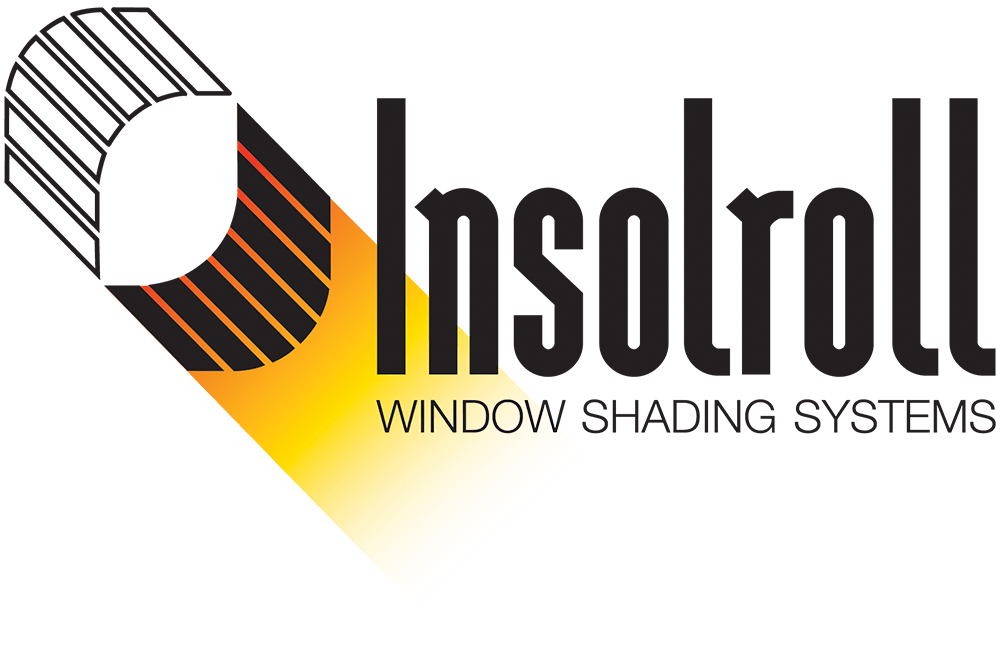
Our new Sierra Solar Screen Shade Fabric is a triple winner- economical, effective and beautiful sun control.
Solar screen shades are hot, and only continuing to grow as a category, both commercial and residential. And why not? Cutting the sun’s glare and heat, making spaces more visually and thermally comfortable without blocking the view is optimal. You maintain a connection with the outside, with no closed in feeling, lower your cooling costs, protect furniture and finishes and protect skin and eyes from harmful UV rays.
Insolroll introduced Sierra solar screen fabric with our 2016 Solar Shade Sample Book, adding a 118″ wide, economical option without sacrificing good looks or solar performance. We’re excited about what Sierra can do for our dealers and customers, making solar shades a realistic option even when the budget is challenging.
Value Priced Sierra Opens Doors

- On a contract project with hundreds of shades, Sierra’s very competitive price point can allow significant savings over other fabrics, particularly where shade fabric is not specified.
- For a small business with glare problems or merchandise to protect, Sierra can make quality solar shades an affordable alternative over low quality window treatments of any kind.
- Sierra is an excellent, cost-effective choice for Health Care facilities that often settle for dust-gathering mini-blinds to solve glare problems.
- Fire Rated, antimicrobial and GreenGuard Gold Certified, Sierra meets all of the needs of commercial applications. This in addition to being a value-priced fabric makes it a desirable spec fabric for the architectural community.
- Schools and universities, which often have tight budgets, want solar screen performance, and Sierra can make this a reality for those facilities
- Multiple densities for multiple facades– having both 3% and 5% openness in each color adds versatility to the Sierra lineup
Sierra Has all the Properties Commercial Applications Need

Solar Performance Properties
Precise shading coefficients and solar/optical properties show each color and density’s heat, glare and UV performance levels. Data available for each performance factor makes color and density choices easier, based on the needs of the application. These include Ts (Solar Transmittance), or the energy that is allowed to pass through the fabric, Rs (Solar Reflectance), or the energy that is reflected away, As (Solar Absorptance), or the energy that is absorbed by the fabric, and Tv (Visible Light Transmittance), or the percentage of visible light that enters the room. The shading performance of each color is indicated by the SHGC (Solar Heat Gain Coefficient), or the percentage of incident solar radiation that is transmitted as heat to the interior through the glass and shading system combined. In general, darker colors with lower Tv values provide better glare reduction, and lighter colors with lower SHGC values provide better heat reduction. Fabric openness affects all of these values, but also determines the amount of UV protection and affects the level of view-through the fabric allows.
Fire Classification
Sierra fabric has earned the NFPA 701 Fire Rating, a standard developed specifically for flame-resistant textiles used for interior window shades. The test measures the ignition resistance of a fabric after it is exposed to a flame for 12 seconds. The flame, char length and flaming residue are recorded. Passing fabrics must meet 3 criteria for fire safety.
Antimicrobial
The ASTM G21 antimicrobial standard evaluates the effectiveness of incorporated/bound antimicrobial agents as well as the “shelf life” of those agents in a material, in this case, Sierra fabric. The fabric is subjected to a prepared bacterial mixture, and the reduction in the bacteria is measured and compared against an untreated control.
Environmental
In addition to being lead-free, Sierra fabric is GreenGuard Gold Certified. According to industries.ul.com, this standard helps “reduce indoor air pollution and the risk of chemical exposure while aiding in the creation of healthier indoor environments. GreenGuard Gold Certification includes health based criteria for additional chemicals and also requires lower total VOC emissions levels to ensure that products are acceptable for use in environments such as schools and healthcare facilities. In addition to limiting emissions of more than 360 VOCs and total chemical emissions, GreenGuard Gold Certified products must also comply with requirements of the State of California’s Department of Public Health (CDPH) “Standard Method for the Testing and Evaluation of Volatile Organic Chemical Emissions from Indoor Sources Using Environmental Chambers, Version 1.1 (2010)” (also known as California Section 01350).”
If you haven’t looked at Sierra yet, it’s time to give it a try!
